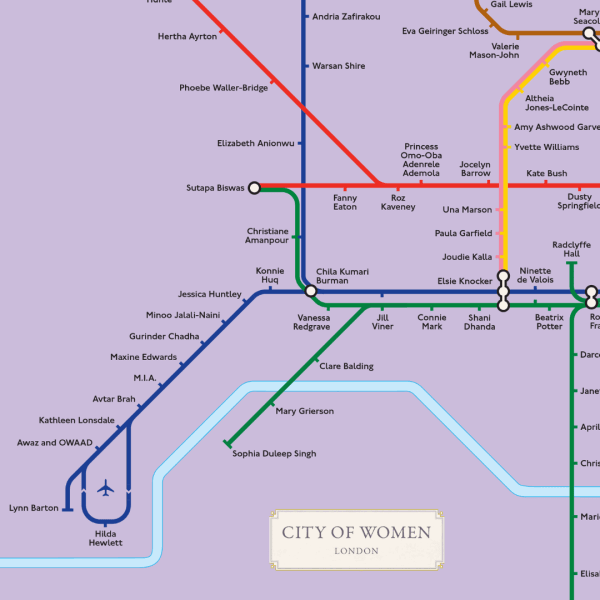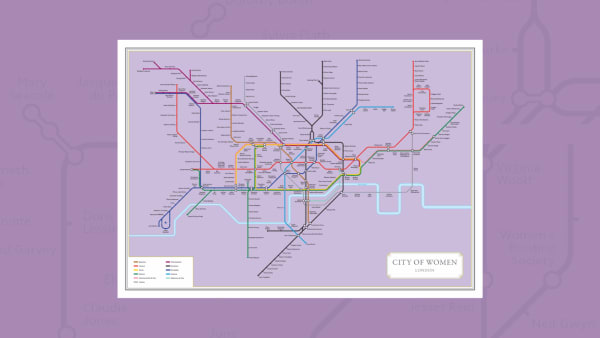Public space is and has always been political. Statues and place names work to memorialise the power of the day, venerating some and invisibilising others. And London is no exception.
In London there are more statues of animals than there are women, only 14 per cent of blue plaques are dedicated to women, and the official Tube map only has three stops named after women. City of Women London seeks to upend the logic that has marginalised women and non-binary people in mainstream accounts of London history by inscribing them as part of the city’s most iconic map.
For City of Women London, the Tube map familiar to Londoners has been reimagined by Reni Eddo-Lodge and Emma Watson, in collaboration with Rebecca Solnit, to celebrate the lives of women and non-binary people who have left a lasting impact on the city. The new map, unveiled on International Women’s Day in partnership with Transport for London, re-names each stop after a woman, non-binary person or a group who have shaped London.
Rather than the overwhelmingly male landed gentry and aristocrats commemorated in the names that punctuate our commutes, Eddo-Lodge, Watson and Solnit centre past and present trailblazers and icons as well as unsung heroes from London’s hidden histories.
This interactive version, produced by researchers at the Bartlett Centre for Advanced Spatial Analysis, University College London, contains biographies and original research about each of the people on the print map. A living resource, it launches with detailed biographies of living women on the print map, and will grow, adding further detail about the historic people represented on it over the course of Women’s History Month 2022.
The project is inspired by Rebecca Solnit and Josh Jelly-Schapiro’s acclaimed book Nonstop Metropolis, in which they reworked the New York City subway map to celebrate women who had made their mark on the city. The map then became an iconic poster and sparked numerous conversations about public space, history, gender, feminism, and memory.
A poster version of the map is published by Haymarket Books and is available to purchase.
The people allocated to each station were identified through a multi-layered research process, beginning with an open call for suggestions. Ideas were also gathered by consulting with a further group of historians, writers, curators, community organisers, women’s rights organisations, museums, and librarians. The names for the map were finally selected by the authors of the project, with input from an advisory group.
In some cases, names have been placed at a station based in a part of London linked to their life or work. The inclusion of several non-binary people on the map recognises the resonance between their remarkable lives and undertakings and the anti-patriarchal spirit of the City of Women project (in all cases, they are in full agreement about their inclusion).



